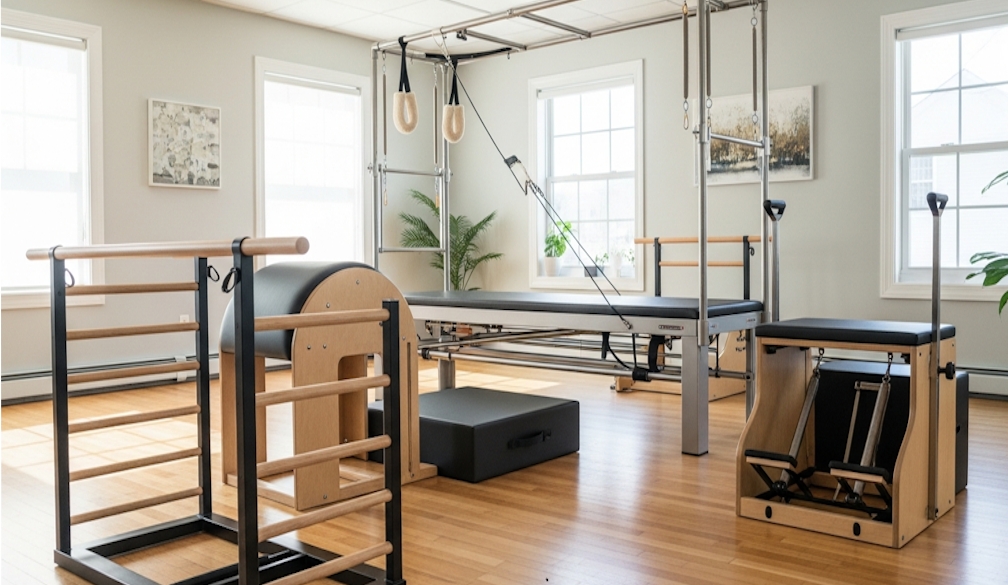Days are getting shorter and colder. 6 tips for sticking to your fitness goals
- Written by Juliana S. Oliveira, Postdoctoral Research Fellow, Physical Activity, University of Sydney

Daylight saving ends this weekend. The days are shorter and getting colder. It’s less appealing to cycle to work, walk after dinner, or wake up early to hit the gym. But we all know daily physical activity is essential for our health and wellbeing.
Physical activity releases feel-good neurotransmitters in our brains, which help to alleviate stress, anxiety, and depression. It also helps prevent diseases such as diabetes, heart disease and some cancers. Regular physical activity can prolong life and improve overall quality of life.
However, many of us find it difficult to achieve the recommended 150 minutes of moderate intensity physical activity each week. In fact, three out of ten Australians and half of Australians aged 65 and over are inactive.
So, what can you do to stay motivated and keep moving regularly through the darker months? Here are some tips.
1. Nail those goals
Goals can provide us with a sense of purpose, meaning and direction. But just aiming to “get fit” is less likely to cut it than goals that are SMART: specific, measurable, achievable, realistic and time-bound.
Specific goals are based on an observable behaviour or activity, such as step count, yoga, or competing in an event.
Measurable goals can be tracked, so you can easily tell whether you have ticked them off.
Achievable goals are realistic and based on your current fitness and abilities. But they can and should still be challenging. If you’ve only ever run 5 kilometres, it won’t be realistic to aim for a half marathon in the next month. But you could aim for 10 kilometres.
Relevant goals hold personal meaning for you. Articulating why it’s important will help motivate you to do it.
Time-bound goals include a target date for achieving them. You can always revisit your deadline if you’re ahead of schedule or if it’s too unrealistic.
An example of a SMART goal could be: “I will walk 10,000 steps every weekday within a month.” Then you can break it down into short-term goals to make it more achievable. If you currently walk 6,000 steps each day, you can increase steps by 1,000 every week to reach 10,000 by the end of the month.
2. Keep track
More than 90% of Australians own a smartphone and more than two in ten own a fitness tracker or a smartwatch. These devices can help you track your goals and activity, keep you accountable and increase your motivation.
A 2021 systematic review suggests fitness trackers and smartphone apps can assist people to increase their step count by up to 2,000 steps per day. Our research demonstrated fitness trackers can also be helpful in increasing physical activity among older people. If you don’t have a fitness tracker, you can buy low-cost pedometers or track your activity times using paper and pen.
3. Plan for success but prepare for barriers
Take some time to think about the potential barriers that could prevent you from being active and plan solutions to overcome them.
For example, if the cost of physical activity is too high for you, try to find options that are free, such as walking or running. You can also consider free online programs or streaming videos.
If you find it difficult to fit exercise into your busy schedule, try exercising early in the morning before you start your day and laying out your workout clothes the night before. You could consider joining a gym with flexible timetables. A good strategy is to try to fit physical activity into your daily routine, such as walking or cycling to work.
If you are living with a chronic health condition or disability, consider seeking guidance from a health professional such as an exercise physiologist or physiotherapist. Start slow and gradually increase your activity and find something you enjoy so you are more likely to keep doing it.
4. Team up with a workout friend
Physical activity can be more fun when you do it with someone else. Studies show working out with friends can be more motivating and enjoyable. It can also help with accountability, as some people are more likely to show up when they have a workout partner. So, find a friend who supports your goal of being more active or maintaining your current activity levels.
5. Plan yourself a little treat
Make an appointment with yourself in your diary to exercise. Approach it as just as important as meeting a friend or colleague. One idea is to delay something you’d rather do and make it a reward for sticking to your activity appointment. If you really want to go out for coffee, do a hobby, or watch something, go for a walk first.
Research shows incentives can dramatically increase physical activity levels.
6. Find a coach
If you want more support, health coaching might be an option.
Trained professionals work one-on-one with people, sometimes via telehealth, to find out what’s reducing their motivation to make healthier choices, such as exercise. Then they employ behaviour change techniques to help them meet their health goals.
Our recent research suggests health coaching can improve physical activity in older people and those with chronic pain. In New South Wales, Victoria and Queensland, these sessions are government-subsidised or free.
Authors: Juliana S. Oliveira, Postdoctoral Research Fellow, Physical Activity, University of Sydney



















